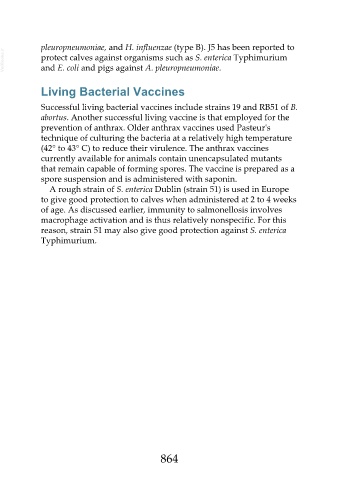Page 864 - Veterinary Immunology, 10th Edition
P. 864
pleuropneumoniae, and H. influenzae (type B). J5 has been reported to
VetBooks.ir protect calves against organisms such as S. enterica Typhimurium
and E. coli and pigs against A. pleuropneumoniae.
Living Bacterial Vaccines
Successful living bacterial vaccines include strains 19 and RB51 of B.
abortus. Another successful living vaccine is that employed for the
prevention of anthrax. Older anthrax vaccines used Pasteur's
technique of culturing the bacteria at a relatively high temperature
(42° to 43° C) to reduce their virulence. The anthrax vaccines
currently available for animals contain unencapsulated mutants
that remain capable of forming spores. The vaccine is prepared as a
spore suspension and is administered with saponin.
A rough strain of S. enterica Dublin (strain 51) is used in Europe
to give good protection to calves when administered at 2 to 4 weeks
of age. As discussed earlier, immunity to salmonellosis involves
macrophage activation and is thus relatively nonspecific. For this
reason, strain 51 may also give good protection against S. enterica
Typhimurium.
864

